Building Information Modeling in Transportation (Digitalizing the Transportation Infrastructure): Dr. Veit Appelt (#VA1)
Format
Lectures and seminars in a double block (2x 90 minutes) and guest lectures (60–90 minutes) as livestreamed videos with online chat function and broadcast with option to download. Participants could also interact with one another via a group communication platform.
On-site examination with the opportunity to acquire the buildingSMART “Professional Certification – Foundation Basis.”
A Covid-19 aid measure enabled infrastructure students from TU Cottbus in Brandenburg and those enrolled in lectures and seminars at HTW Dresden as well as professors and other teaching staff from other universities in Aachen, Cologne, Bochum, Lübeck, Koblenz, Munich, Karlsruhe to attend the lectures. The content of the presentations and educational films as well as additional material was all made available on the online platforms for participants in Cottbus and Dresden.
Keywords
Livestream, YouTube, green screen, OBS, online chat
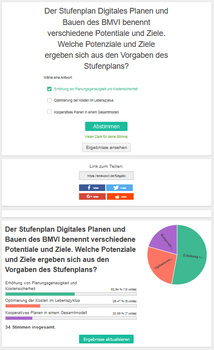
© Veit Appelt
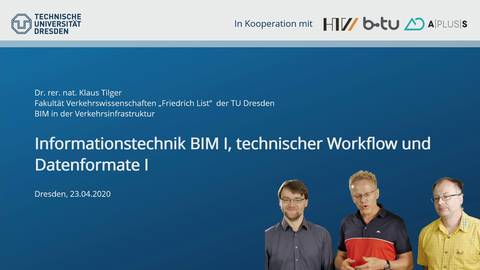
© Veit Appelt
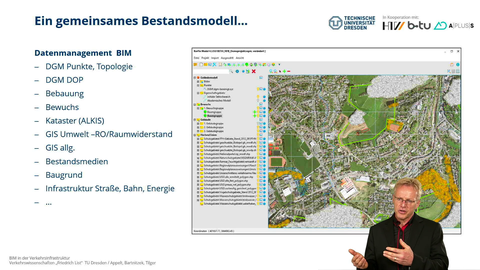
© Veit Appelt
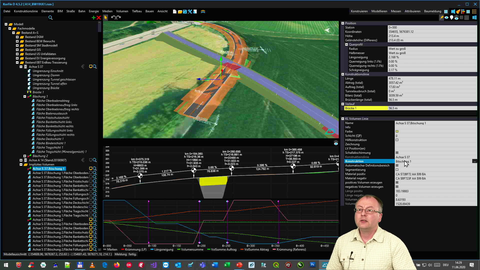
© Veit Appelt
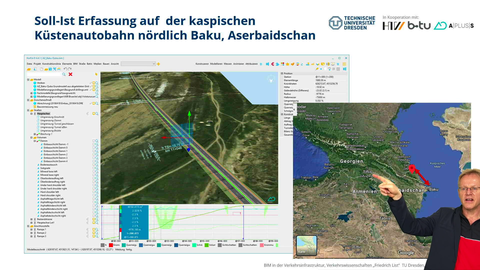
© Veit Appelt
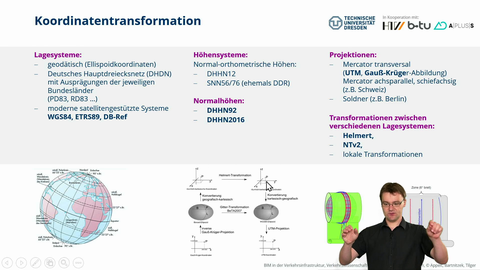
© Veit Appelt
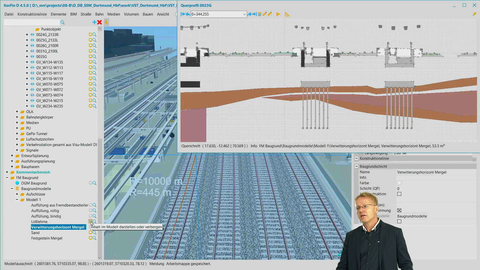
© Veit Appelt
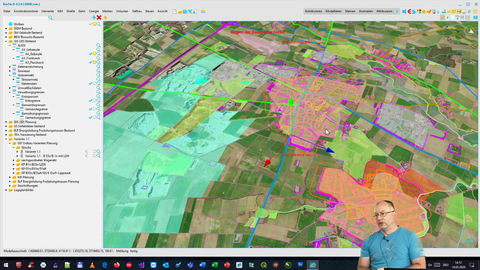
© Veit Appelt
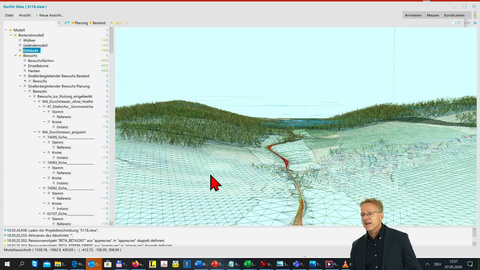
© Veit Appelt
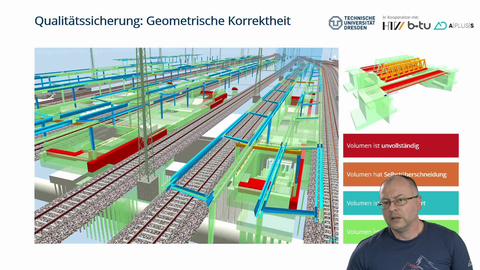
© Veit Appelt
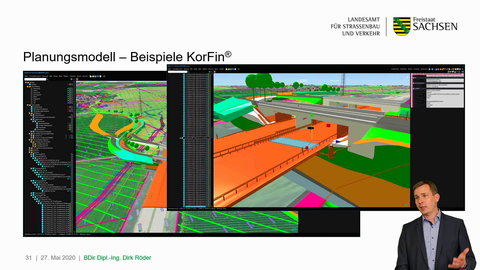
© Veit Appelt
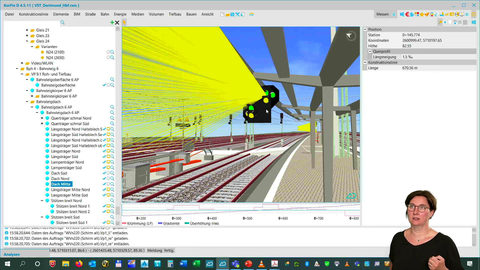
© Veit Appelt
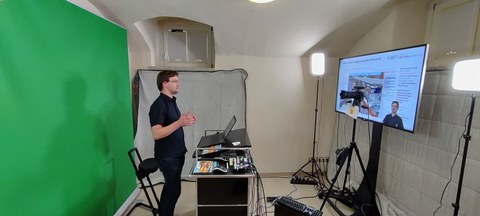
© Veit Appelt
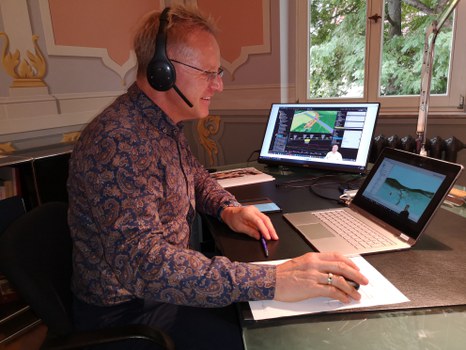
© Veit Appelt
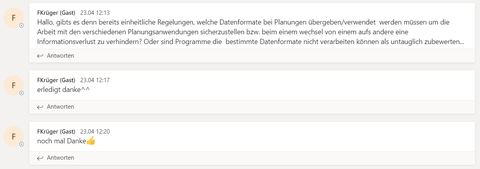
© Veit Appelt
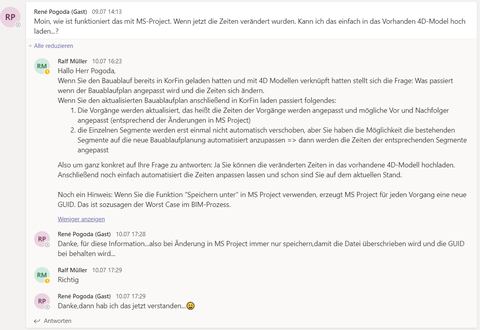
© Veit Appelt
Description
Following the basic principle of an inverted classroom, the “Building Information Modeling in Transportation” teaching concept was subdivided into four phases during the online lecture.
|
Understanding |
Consolidation |
Reflection |
Practice |
|
The online lecture was livestreamed over Microsoft Teams and YouTube, and was supplemented with various interactive elements. |
The online lecture was made available to students to stream or download. These files also referred viewers to additional content. |
Students had the opportunity to write one-on-one with the teaching staff, external lecturers and academic staff via various Microsoft Teams channels. |
In online seminars and livestreams, students were able to use digital planning tools in collaboration with the lecturer as well as independently. |
|
|
|
|
The objective was to realize the didactic concept of a digital lecture course through continuous digital redesigning of the lecture “Building Information Modeling in Transportation.” The didactic concept was supplemented with various interactive elements and an online seminar featuring digital planning. The lecture phase took place in the form of e-lectures provided exclusively online. This gave students the opportunity to repeat video segments as necessary according to their learning pace, filling any gaps in knowledge before they arose. Depending on their topic, these e-lectures were all about 30 minutes long and were split up by breaks between subjects.
One advantage of sequential content of this length as opposed to a 90-minute, on-site lecture has to do with the structure and clearer division of the different topics contained in a single lecture. It also means that students might pay greater attention to the videos, absorbing and processing the content better. The lectures could also be downloaded as an additional motivating factor for continued study. Various video formats can be used to portray different lecture elements, such as: a simple screencast; a video of the lecturer with the presentation slides, the lecturer working on a whiteboard or the whiteboard without the lecturer; a PowerPoint presentation; or live demos of various software solutions and digital applications and concepts. Since the lecture objectives were to provide a deeper understanding of interdisciplinary engineering and IT topics, screencasts proved an excellent option for supplying supplementary explanations. These enabled the lecturer to gradually present written and verbal explanations of the theory, which is particularly beneficial in a partially mathematical lecture.
A digital whiteboard was used to collect and develop ideas in the moment. The whiteboard was saved and made available to students for later use. Unidirectional and portable microphones were used to deliver accented speech with changing stress, volume and speed, enabling smooth interactive communication.
In addition to the theoretical and practical approaches to digital planning, the foundations of information technology and the holistic planning within the infrastructural life cycle, students also received insight into work of external lecturers involved in planning, public administration, universities, construction companies and infrastructure operations. This took the form of presentations and follow-up discussions online. For the online seminars, students had access to guidelines for modeling existing constructions, digital planning and coordinating in the 3D model. They also had the opportunity to consult with the lecturers online. Moreover, students made use of the exchange forum.
Content and methods for improving environmental and resource conservation were included as a key content objective of digitalization and in infrastructure planning throughout.
The recorded and edited videos were uploaded to the learning platform OPAL and provided to students at TU Dresden and HTW Dresden. They also remained externally available for streaming until the next lecture.
Since the computer cabinet was not digitally accessible from the outside, we set up an additional external server. The server stored free student licenses for the 5D software KorFin® as well as data and a test project. This enabled the knowledge imparted during modeling and drafting practicals to be consolidated in group work in parallel to or after the seminar. At the same time, the data was shared via cloud computing. Students had the option to present and discuss the practical projects individually or in groups as part of the examination.
The course was split into 4 blocks:
- International, EU and German fundamentals
- Digital twin models of existing constructions
- Real-time infrastructure modeling
- Construction of the new digital twin and discussion
Each block of 3 or 4 lectures/seminars (split again into about 30-minute units) comprised an introduction with a mission statement and objective at the beginning and a summary conclusion at the end. Live online consultation on theory and the practical project facilitated interaction and post-processing of the topics. The online chat function was permanently enabled for all lectures.
Additionally, students gained the necessary knowledge to obtain the international certificate from BuildingSMART International, preparing them for the multiple-choice test taken via the server in London either in English or in German. TU Dresden gained the financial support of engineering organizations and their members to cover the additional testing and certification costs. The test was taken in a digital exam room at TU Dresden.
Following the course, students filled out a questionnaire providing suggestions for improvement for the coming academic year. The questionnaire contained items relating to both course content and teaching methods.
Link to the course: https://tu-dresden.de/bu/verkehr/ivs/gsa/studium/lehrveranstaltungen/bim_im_verkehrswesen
Link to the guest lecture by Vinci Autoroutes/Eurovia: https://youtu.be/t4uqn3y46Fk
Contact
Dr. Ing. Veit Appelt (TU Dresden, A+S Consult GmbH), Course Leader
Dr. rer. nat Klaus Tilger (A+S Consult GmbH)
Dipl. Math. Jens Bartnitzek (A+S Consult GmbH)
Voting ID
#VA1















